

The magic bullet – if you walk 10,000 steps per day it will solve all of your health problems! Not quite – but the incentivisation to walk & move more every day certainly does have plenty of health benefits and science backing it up.
The relationship between daily step count and all-cause mortality has been investigated, and people with the highest daily step count (averaging over 10,000 steps per day) have the lowest risk of mortality. How quickly you walk, or your cadence (steps per minute) does not seem to increase the benefit of walking on mortality, so even a slow stroll still boasts huge health benefits. In a nutshell – move more to reduce mortality risk.
Research has reported that those who walk ~9,000 steps per day had a 40% lower mortality risk than those walk ~4,000 steps per day.
The evidence is clear! This chart here is adapted from a recent publication highlighting the positive effects that greater step activity per day has on mortality risk. Increasing activity from 2,000 to 4,000 and 6,000 steps has dramatic positive effects on reducing mortality risk. This finding of increasing step count to decrease mortality risk has been supported by multiple research studies and meta-analyses. There does appear a point where there is a diminishing level of return for further increases in step count.
The question you have to ask yourself is – “Where can you better invest your time to improve your health span?”
Could this time be utilised to complete some resistance training protocols for muscle strength & hypertrophy, or used to complete some yoga or mobility training? Are you in a position where you can increase the intensity of your ‘walking’ to ‘jogging’ or ‘running?
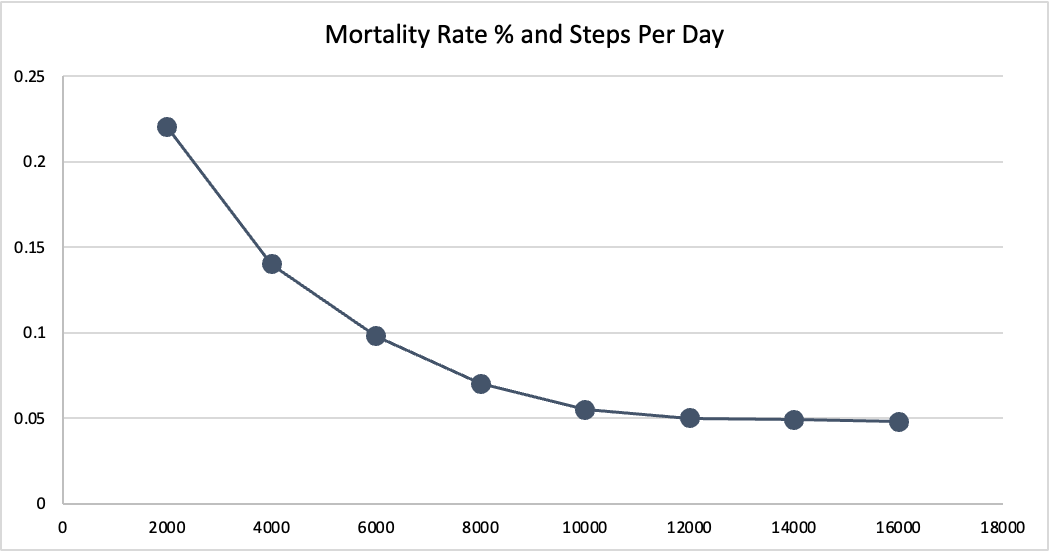
Research has demonstrated a longer-term protective effect of a higher step count per day against metabolic health. As well as longer term associations, walking immediately after eating has shown to significantly improve glucose control. More stable blood glucose can support better energy levels, mood and hunger. The myth that you need to wait an hour after eating before doing any form of exercise has hopefully been well abolished.
Of course weather – and other factors – might limit your ability to walk immediately after eating. Research has also explored the efficacy of a bodyweight circuit or standing after eating. Either walking, the circuit, or standing can positively effect blood glucose response. In other words, the modality of movement (or standing) is less important than the timing – that you use these strategies immediately after eating.
If you have a meeting or a call straight after lunch – why not consider standing at your desk for this, or taking the call outside on a walk?
If you are keen to objectively assess your glucose levels – there is technology widely available that can measure relative changes to glucose levels. Companies such as Veri, Levels, and Supersapiens have developed software and apps that make tracking your blood glucose responses very simple and friction-less. Since people respond differently to foods, individually assessing your response can be an insightful task every so often. Dr. Adam Bataineh recently wrote a piece on Span Health about glucose measurements which includes some more detail.
For example – take a look at my glucose responses after a couple of different meals.
Firstly, using Veri – you can see a stable glucose response after a smoothie. This is a well-balanced macronutrient meal, and I went for a walk within a few minutes of ingesting this. Compare this to the salmon, vegetable and egg-fried rice dinner I had, where I sat down immediately afterwards to watch something on the television. You can see the rapid glucose increase, and poor “score” given by Veri. The time of day can also have an influence on your response to meals.
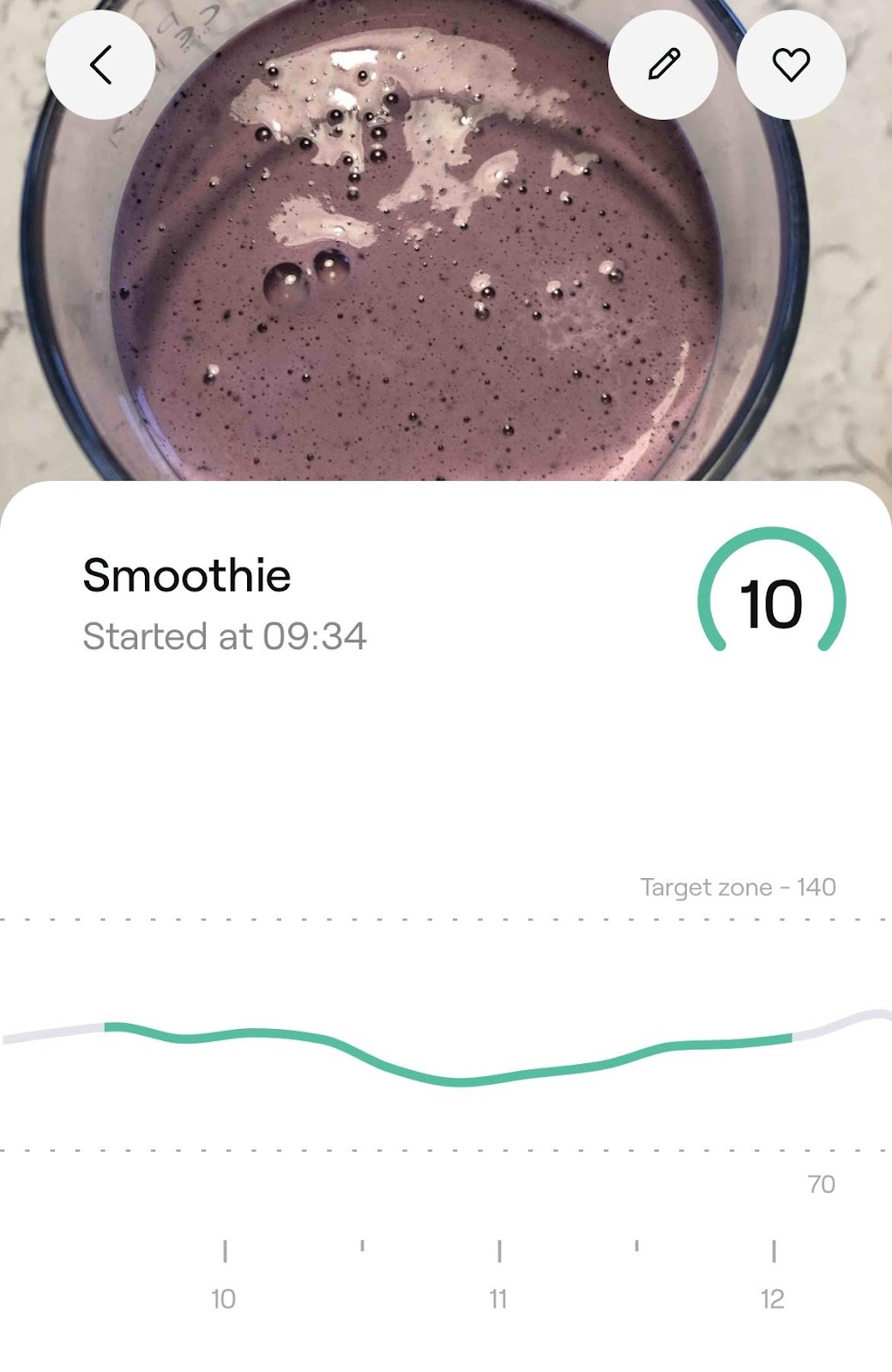

Secondly, using Supersapiens – compare 2 well-balanced macronutrient meals. In the first image, you see a rise in glucose levels which is halted by a walk. However, on the second image, you can see the effect of watching a movie immediately after eating with no activity. These have massive implications on energy levels.
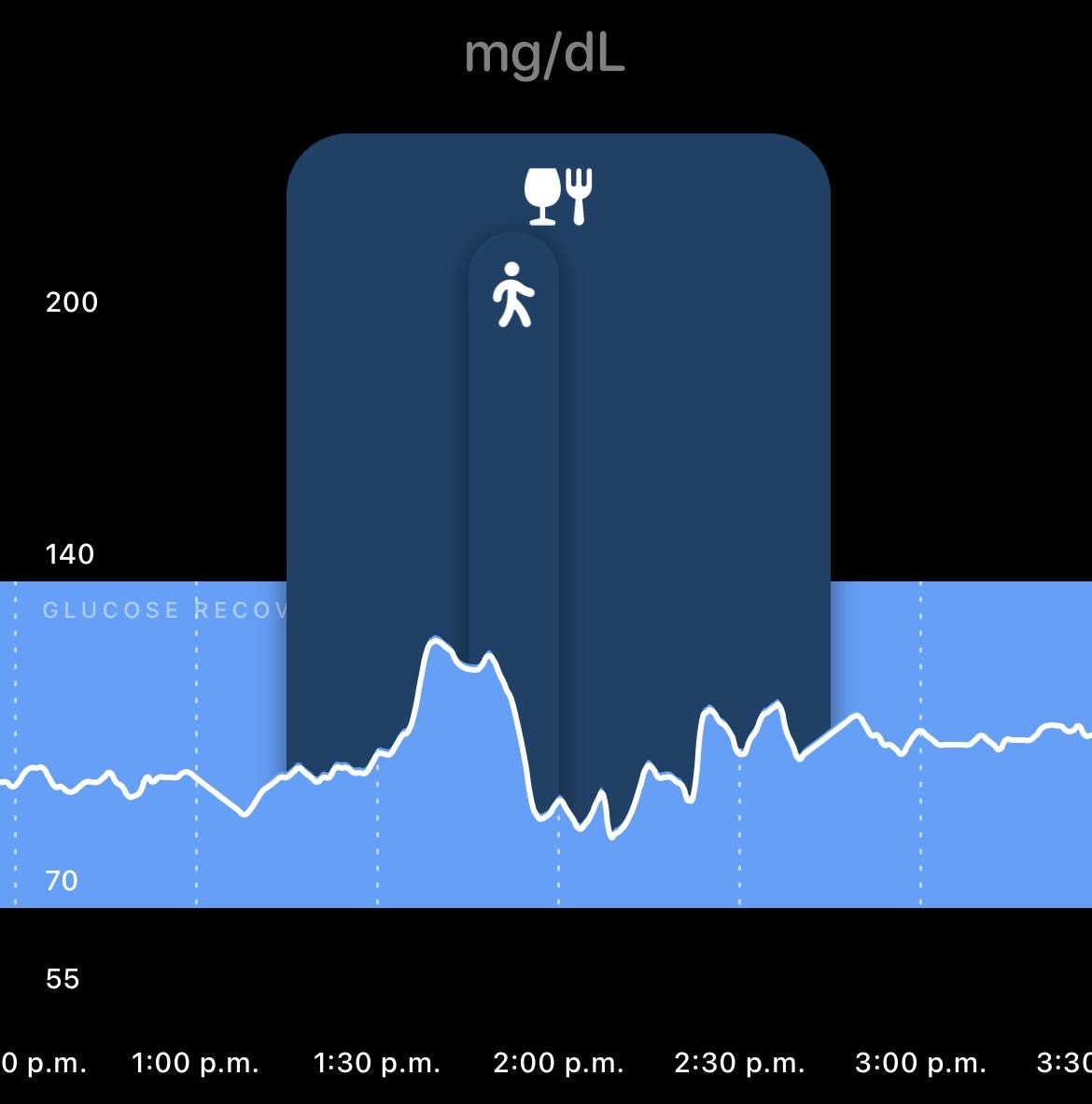
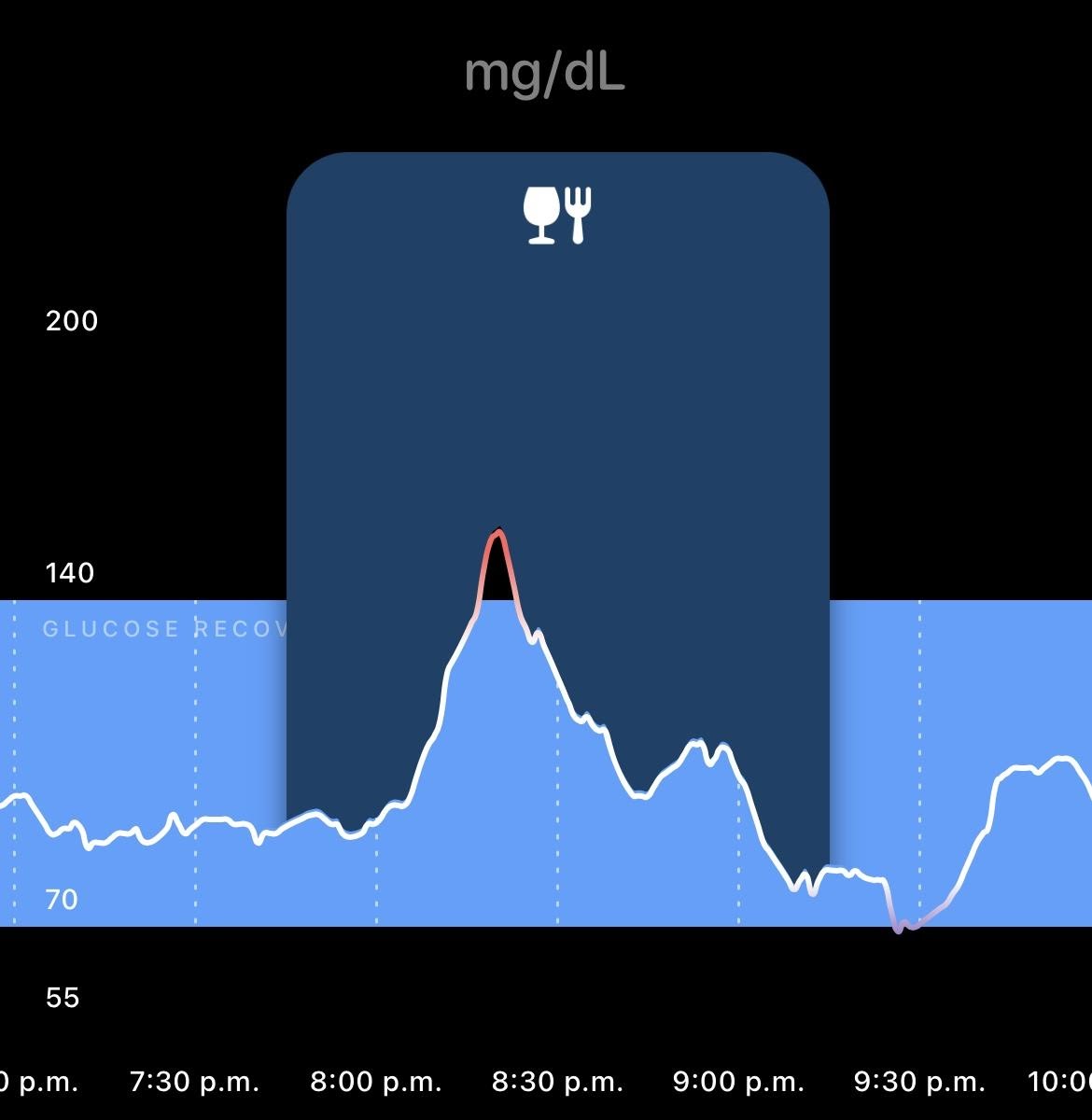
Cardiovascular training and high day time activity has been shown to be superior to only cardiovascular training for increasing fat oxidation, and lowering heart rate and blood lactate during exercise. The best way to do this is to try and incorporate movement and walking into your daily routine. Walk to and from work, take a call on the move, have a walking meeting and get out of the office (or house) for lunch too. You would be surprised how much movement and steps this adds up to.
Consider using the table below to help you achieve your daily activity levels – in addition to your exercise plan. Breaking down your steps by the hour can be a great way to keep you active throughout the day. For example, the Apple Watch is a great device to support awareness to your movement. It alerts you once per hour when you are sitting to encourage you to stand and move. It then sends you an immediate reward message for doing so. “Closing your rings” has become quite a nice feat for the day! The use of wearables for nudging you to move during the day are powerful.
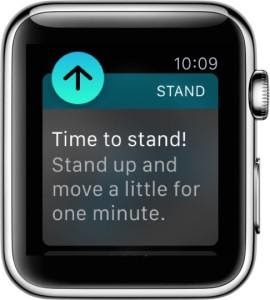
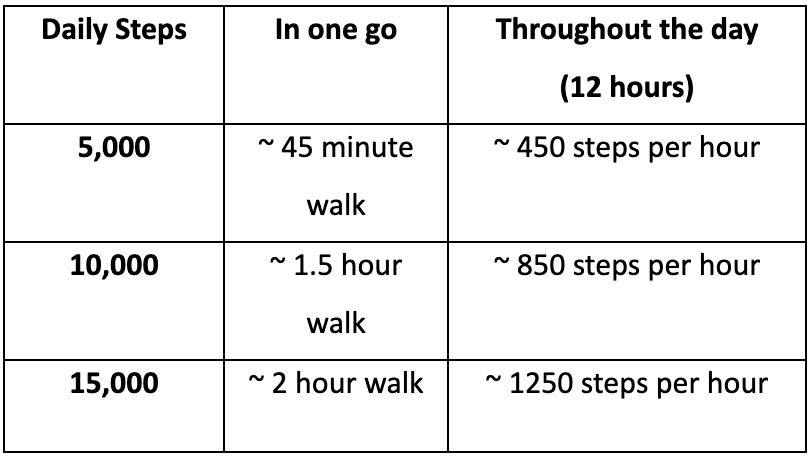
Of course, some people’s work schedules and jobs may not allow the flexibility of going for a walk a few times per day. There are alternative options that allow you to stay active from your desk! Items such as a walking pad, desk cycle, or even hybrid bikes such as the Fitdesk can help cater for some people. Of course, they come with a price tag – and you lose the benefits you get from being outdoors and walking too – but for those who really need the options, they can be quite useful! Benefits from being outdoors in nature have been reported to have positive associations with self-reported health and well-being. Spending at least 2 hours – and up to 5 hours – have positive associations with health & well-being, independent of achieving recommended activity levels. There are also additional benefits to being outside in sunlight if this is early in the day, for circadian alignment and health.
At the end of the day, steps are a really good representation of how active you are during the day. Of course, you may accumulate activity in other ways (such as cycling) – the most important thing is to move. Whilst steps and walking certainly provide amazing health and longevity benefits – however, you still need to consider your daily activity as part of a wider approach to health, including:
Daily Step Count and All-Cause Mortality: A Dose-Response Meta-analysis of Prospective Cohort Studies
https://pubmed.ncbi.nlm.nih.gov/34417979/
Association of Daily Step Count and Step Intensity With Mortality Among US Adults
https://pubmed.ncbi.nlm.nih.gov/32207799/
Physical activity levels in American and Japanese men from the ERA-JUMP Study and associations with metabolic syndrome
https://pubmed.ncbi.nlm.nih.gov/32099725/
Immediate post-breakfast physical activity improves interstitial postprandial glycemia: a comparison of different activity-meal timings
https://pubmed.ncbi.nlm.nih.gov/31396757/
Background Inactivity Blunts Metabolic Adaptations to Intense Short-Term Training
https://pubmed.ncbi.nlm.nih.gov/34398061/
The relationships between step count and all-cause mortality and cardiovascular events: A doseresponse meta-analysis
https://pubmed.ncbi.nlm.nih.gov/34547483/
Association of Cardiorespiratory Fitness With Long-term Mortality Among Adults Undergoing Exercise Treadmill Testing
https://pubmed.ncbi.nlm.nih.gov/30646252/
Spending at least 120 minutes a week in nature is associated with good health and wellbeing
https://pubmed.ncbi.nlm.nih.gov/31197192/